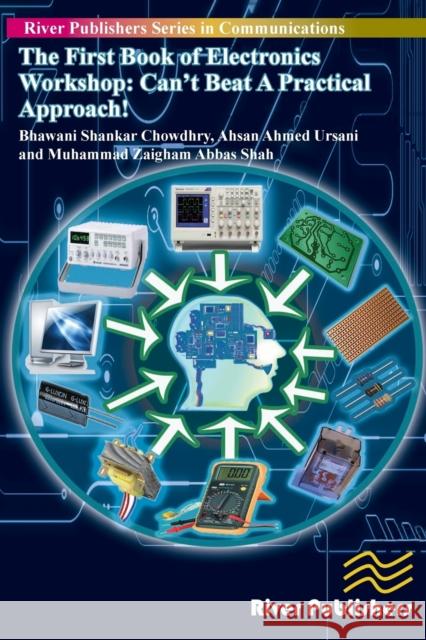The First Book of Electronics Workshop: Can't Beat a Practical Approach! » książka
The First Book of Electronics Workshop: Can't Beat a Practical Approach!
ISBN-13: 9788793102477 / Angielski / Miękka / 2014 / 98 str.
The field of electronics has seen an unparalleled growth in the last 60 years, from the invention of the transistor to the making of the processor. In this ever evolving field, the modern day student has been observed to jump to complex circuit designing without having a firm understanding of the internal circuit elements and the tools that are used to analyze them. This book is an attempt to redress these shortcomings by providing an apt and concise description of basic electronic components and apparatus and how to work with them practically. Theoretical description is followed by specifying the practical considerations so as to cement the student's understanding of the component/apparatus.
This publication contains a more detailed component description with a focus on real life usability. It includes many pictures showing the different shapes and forms of each available component. A set of questions are included after each practical so as to challenge the student's understanding of the component discussed. Tasks have been changed so they relate more to everyday situations and build up student intuition. An included section on working with components introduces the student to basic circuit elements that can be made using various components. The text also features a discussion on noting and analyzing various phenomena that occur during circuit operation such as phase difference, etc.
The First Book of Electronics Workshop imparts technical knowledge on five main topics:
Laboratory Apparatus
Passive Electronic Components
Active Electronic Components
Circuit Assembly
Circuit Simulation
It is envisaged that before students use any of the lab equipment for conducting any practical work, they must become familiar with their use and functions. Similar is the case with the passive and active electronic components. The students mostly perform their practical work in the senior semester over specialized trainers and never get acquainted with the practicality of the circuit components. Hence, they face severe problems while working on their own projects. Similarly, knowing how to build circuits is as important as knowing how to design circuits and how to use the components. Therefore, this practical book also covers techniques of Circuit Assembling.
Though this book adopts a practical approach, it first gives a thorough and sound theoretical background of each and every apparatus and component covered in the book. It then reinforces the theoretical concepts by discussing their practical considerations. The authors feel that this book on electronic workshop is first of its kind and that students of all engineering disciplines in general, as well as Electrical, Electronics, and Telecommunication in particular, will find it useful.
It is the authors' intention that this book will be valuable and insightful in achieving basic knowledge and skills in the exciting and important field of electronics.











